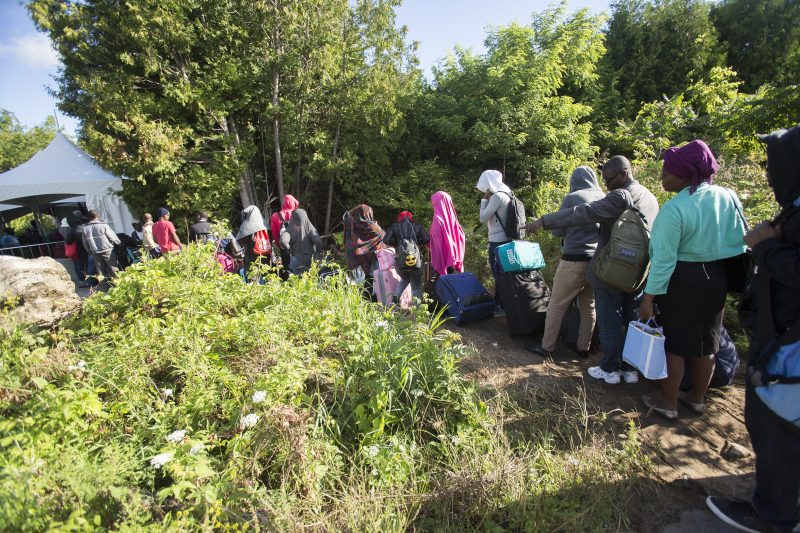Asylum claims in Canada tripled over two years: data
A long line of asylum seekers wait to illegally cross the Canada/US border near Champlain, New York on August 6, 2017 (Geoff Robins)
Montreal (AFP) – The number of people seeking asylum in Canada more than tripled over a two-year period and reached a monthly peak in August 2017 when thousands crossed illegally from the US, Statistics Canada said on Friday.
Since Donald Trump took office as US president in January 2017 pledging a hard line on immigration, Canada has faced a spike in asylum seekers who walked across the border, some braving biting cold and dangerous treks.
“The recent increase in the number of asylum claimants is partly explained by the rise in irregular migrants,” Statistics Canada said in a report, referring to people who cross into the country outside of official entry points.
Claims jumped from 16,058 in 2015 to 50,389 in 2017. They rose even higher, to 55,023, in 2018.
A monthly peak of 8,801 asylum requests was reached in August 2017, Statistics Canada said.
Haitians, with 7,787 claimants, were the largest group that year, followed by Nigerians and US citizens.
Thousands of Haitians fled the United States in the summer of 2017 before the Trump administration’s formal revocation in November that year of Temporary Protected Status granted to 59,000 nationals of the Caribbean country after a 2010 earthquake.
Canada’s previous peaks in asylum claims occurred in 2001, with more than 44,000, and 2008, when almost 37,000 people requested protection.
Under a Canada-US agreement, asylum seekers must file their claim in the country they arrive in.
But this rule does not apply to those who reach Canada by avoiding official border crossings, who are then assured of having their application examined by the authorities.
Of the 50,389 asylum claims received by Canada in 2017, 12,234 were accepted, 10,930 were rejected, and 27,225 are pending, according to Statistics Canada data.
Disclaimer: Validity of the above story is for 7 Days from original date of publishing. Source: AFP.


